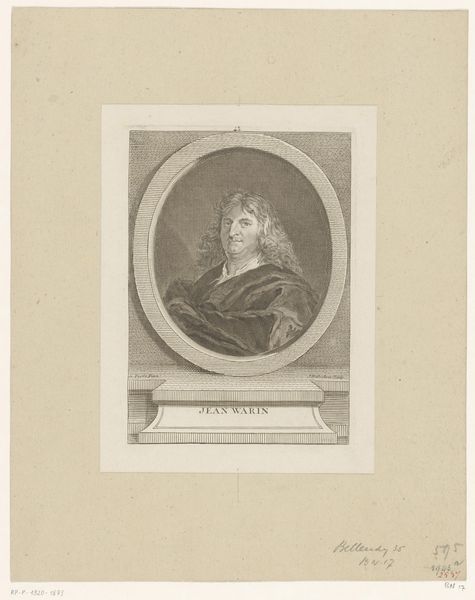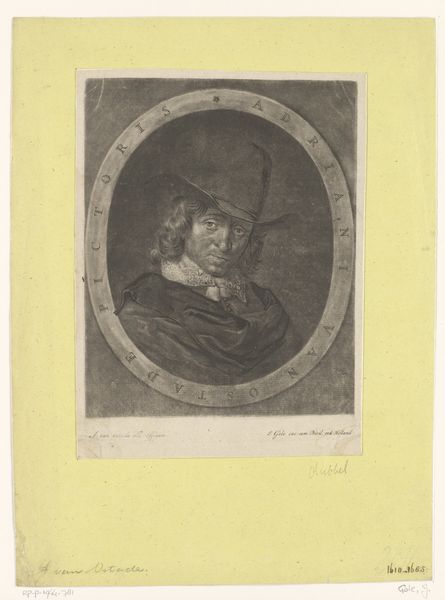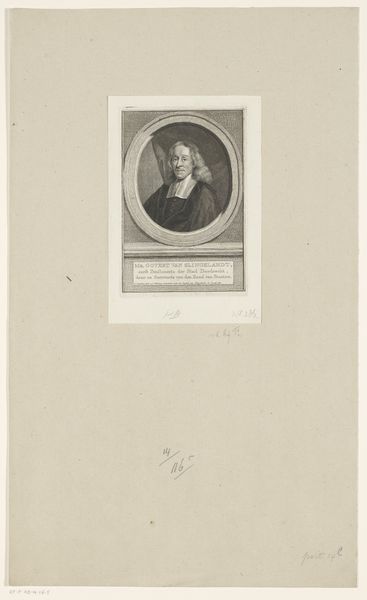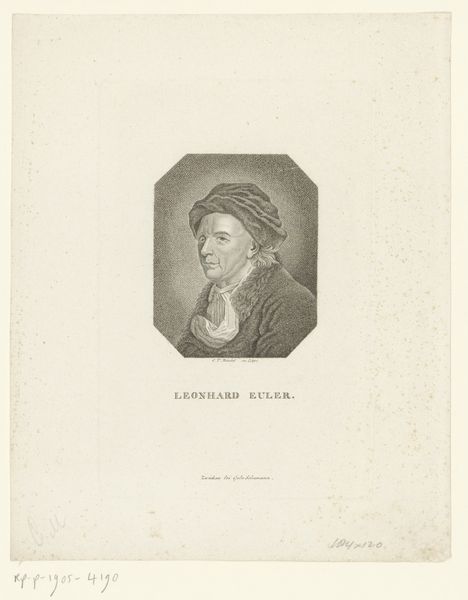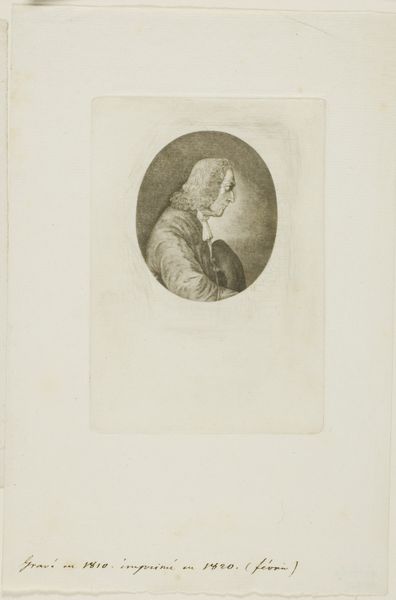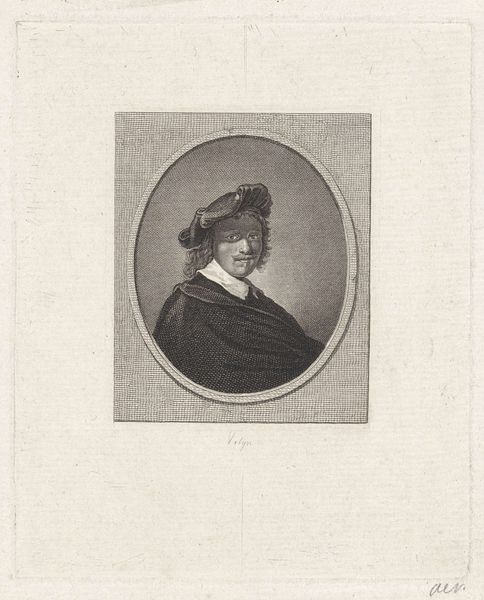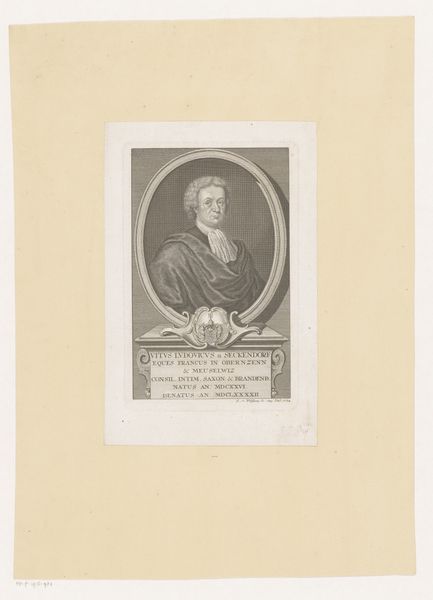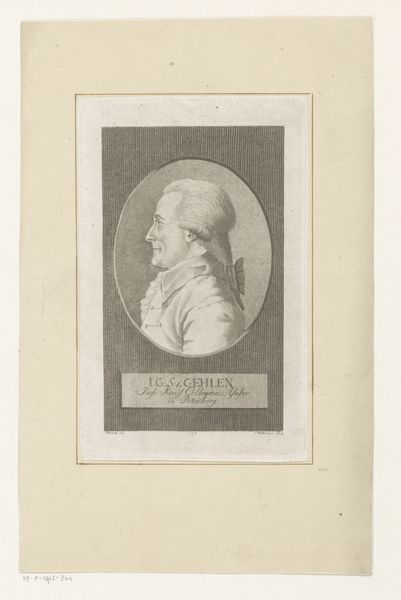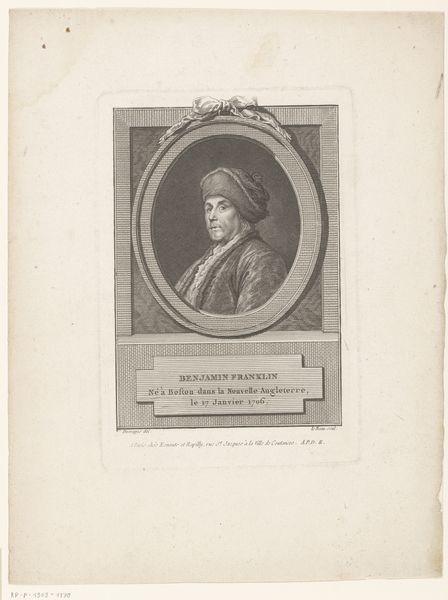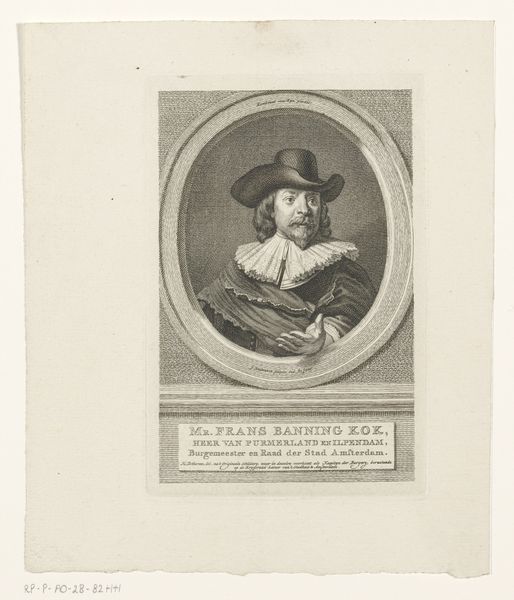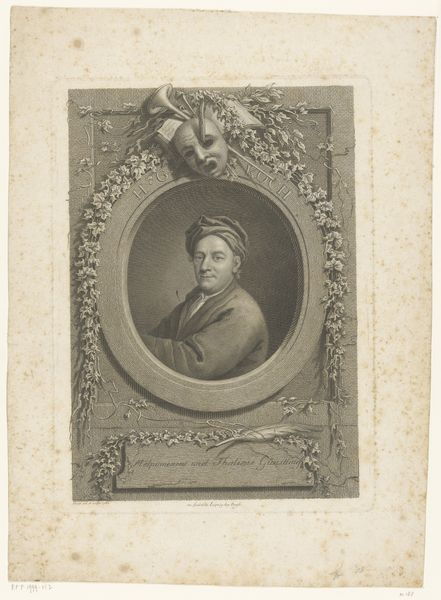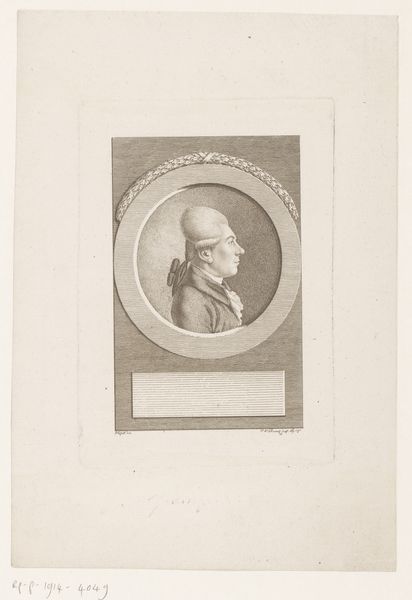
Dimensions: height 285 mm, width 206 mm
Copyright: Rijks Museum: Open Domain
Curator: This is "Man met hond op schoot," or "Man with dog in lap," by Pierre Gabriel Langlois. Dating roughly from 1779 to 1810, it’s an engraving, a print, showcasing a portrait of a man cradling a small dog. What’s your initial impression? Editor: Immediately, there's something unsettling about the gaze. It's a strangely self-aware portrayal for the period. The composition almost borders on the comical, yet his expression hints at a complexity I can't quite place. Curator: Langlois, as an engraver, was incredibly meticulous. Consider the layering of lines, creating depth and texture. The print medium itself made art more accessible during this period, moving away from the exclusivity associated with painted portraiture. Note the label at the bottom says "L'Education Badine." Editor: Exactly, and if we dive into that phrase – "frivolous education," or "playful upbringing," it complicates our understanding. Is this meant to critique aristocratic leisure? Is it poking fun at ideas of gender roles within pet ownership and power, situating it within the socio-political debates concerning class? The man's hat is distinctly… unrefined. Curator: Interesting. Focusing on the process: the act of engraving, and then mass printing creates duplicates, democratizing this image and its statement. There would be hundreds of impressions like the one we have, circulating, interacting within everyday lives in ways a unique painting could not. We can speculate this made art available for a different social class. Editor: And who has the power here, the human or the dog? How did these visual portrayals contribute to shifting societal views on humanity’s dominion over the animal kingdom? This interplay isn't merely aesthetic, it’s inherently political. Curator: Precisely, and the act of engraving demands skilled labor – the work of the engraver and the printing press – which is often obscured when we look at artworks. Thinking about the work done during the enlightenment and beyond to make knowledge available through printed books. Engravings made illustrations widespread, making it possible to illustrate for various written material. This particular artwork can speak to so much of the late eighteenth century through material investigation. Editor: Looking at it with a contemporary lens, it's interesting to unpack ideas concerning privilege and representation of subjects we are not always familiar with from that period. The image sparks an analysis of its own history within the context of evolving attitudes towards class, labour, animal rights and representation. Curator: Agreed, It's a confluence of skilled work and production offering a statement, while, at the same time making accessible artwork that represents other groups of the society during its period. Editor: It leaves you with more questions than answers, which, in my view, is the hallmark of compelling art.
Comments
No comments
Be the first to comment and join the conversation on the ultimate creative platform.
